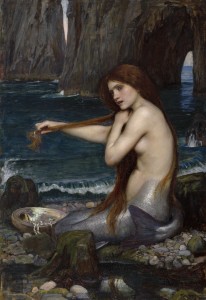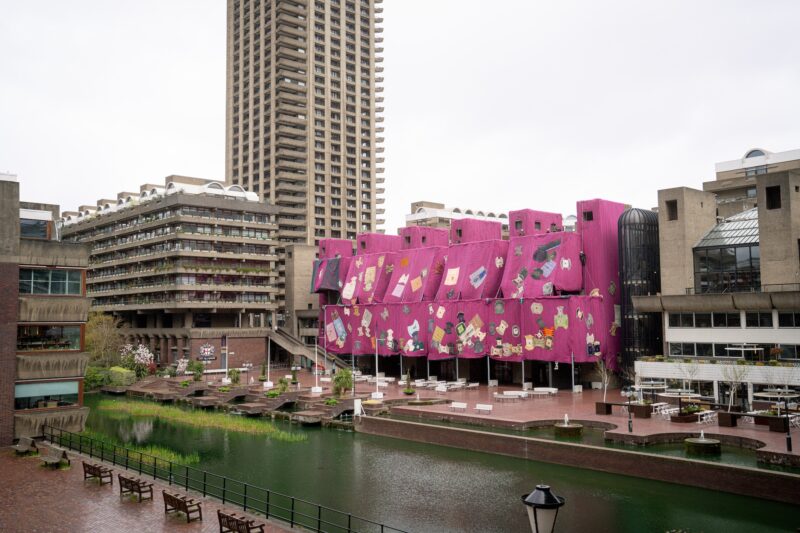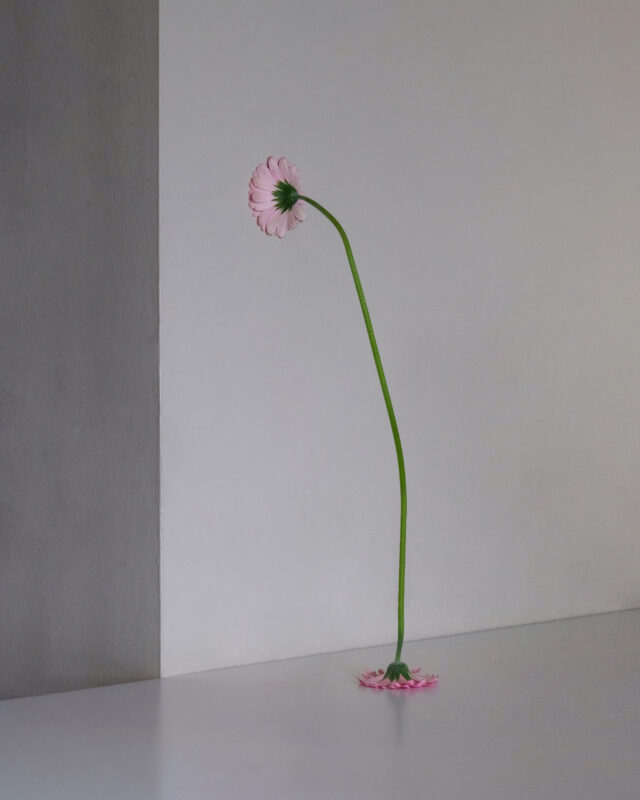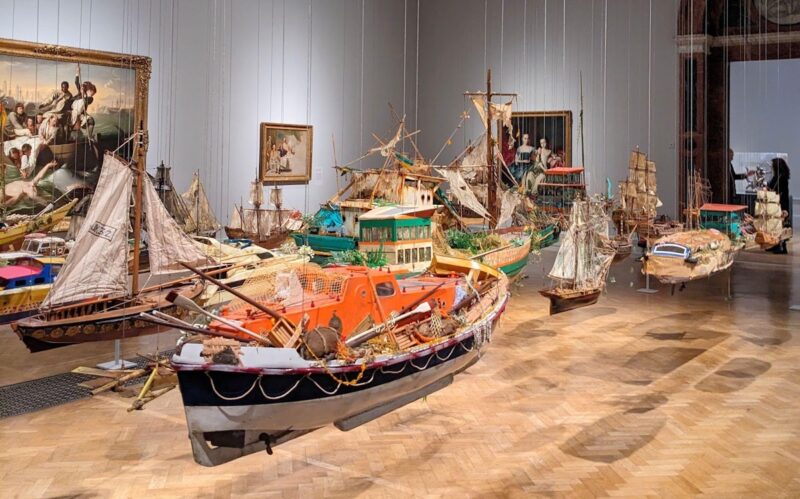
John William Waterhouse A Mermaid, 1900 Oil on canvas 96.5 x 66.6 cm Royal Academy of Arts, London
Photo © Royal Academy of Arts, London
The Sackler Wing of Galleries,The Royal Academy of Arts 27th June – 13th September 2009
The Royal Academy of Art’s new show is a major retrospective of the works of JW Waterhouse, the first to be held in the UK since the 1970’s. The product of more than 12 years of dedicated effort by the shows four curators, ‘JW Waterhouse, the Modern Pre-Raphaelite’ brings together works from both public institutions and from private collections, including the artists sketchbooks, and marks the first time that the Academy has celebrated the works of Waterhouse, one of it’s own members. Whilst the scenes from ancient mythology are beautifully rendered and as packed with symbolic references as one would expect from a recognised master of the subject, what’s fascinating, even for those of us who are not natural fans of neo-classicism and pre-Raphaelite painting, is the way that the exhibition provides us with a glimpse of what an artist had to do to achieve success and establishment recognition in the 19th century.
John William Waterhouse was born in 1849 in Rome the English son of artist parents and grew up in London. He trained with his father; however the work and precepts of the Pre Raphaelite Brotherhood of Millais, Rossetti and Hunt, founded in the year of his birth, evidently influenced him enormously, with the young Waterhouse absorbing some of the PRB’s Romantic fascination for intense human passions.
The fearsomely seductive, yet demure women who are the mainstay of his work seem to be as much inspired by his own complicated view of sexuality as by the commercial imperative to attract the libidinous attentions of Victorian collectors. Fortunately for Waterhouse, the technical ability his father had nurtured in him combined with a tendency toward the very subject matter considered a sign of high art by the establishment and, when Waterhouse made his debut at Royal Academy Summer Exhibition of 1874 he was immediately acclaimed a success.
Presenting the work in chronological order, the Royal Academy’s new show makes it easy to see how, having gotten his career off to a flying start, Waterhouse geared his subsequent work towards fulfilling his ambitions to be recognised as a major artist by the Academy. At the time, technical brilliance was necessary for a successful career, but demonstrating a comprehensive knowledge of the classics was vital, and the more obscure your references, the more you were perceived to be following in the fine traditions of English painting. In 1877 he showed A Sick Child brought into the Temple of Aesculapius, a huge work which combined obscure classical reference points with technical brilliance and a English type of melancholy which came to be associated with his style. It was also notable for its dedication to architectural integrity, informed by the artists visits to Pompeii and Rome.
The works for which JW Waterhouse is most well known are present, and conform to the ideals of the artistic establishment of the time. Thus The Mermaid, subject of a million fridge magnets, combs her hair alluringly and somewhat melancholically whilst flashing a milky white breast, and A Naiad shows the mythical water sprite, nakedness just masked by woodland scenes, discovering the recumbent form of the sleeping Hylas in a chilly-looking English country-side. Probably his most famous picture, The Lady of Shalott shows the Lady, resigned to fulfilling a destiny that will result in her death, setting sail towards Camelot, the final journey in a tale that has much to say about the Victorian’s approach to morality. Painted at a time when the Symbolists were gaining ground the picture is packed with references that would have spoken volumes to those in the know, from the broken reeds at the forefront of the painting to the burnt-out candles on the prow of the small boat.
So little is known of Waterhouse because his private papers have never been found, but his career evidently flourished for more than 50 years, and he achieved formal recognition when he was made a full Royal Academician in 1895. He became a teacher at the Academy and led the organisation of a group of artists who created works sold to raise money for wounded soldiers. By the time he died in 1917, during the First World War, his countrymen were dying in the trenches in their droves, and his final works, though seemingly serene often reference the story of Persephone and the Underworld, where a bucolic scene might contain the secret entrance to a hellish underworld.
For More information: (The Royal Academy)
J.W. Waterhouse: The Modern Pre-Raphaelite (The Daily Telegraph)
Phwoar! It’s John William Waterhouse (The London Evening Standard)







